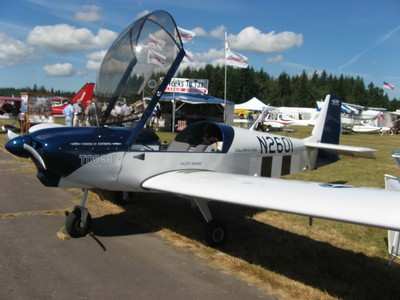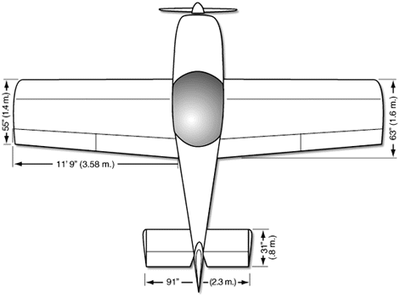ADs State Accident May Have Been Caused By Wing-Structure
Break-Up
As a result of an investigation into the September 14 crash of a
Zodiac CH 601 XL, the Dutch CAA has released an emergency
Airworthiness Directive grounding the type, effective October 24,
2008:

"On the 14th of September 2008 a fatal accident occurred with a
Micro Light Aircraft, Type Zodiac CH 601 XL. There are indications
that break-up of the wing structure was the cause of the accident.
Based on the preliminary findings of the accident investigation of
the Dutch Safety Board, the Civil Aviation Authority of the
Netherlands declares the aircraft not airworthy until further
notice."
In response to the action taken by the Dutch CAA, Zenair Europe
issued a press release, and its own Airworthiness Directive:
"On Saturday October 25, Zenair SARL was informed by a Dutch
Zodiac XL owner that the Dutch CAA had issued an emergency
Airworthiness Directive the previous day, calling for the immediate
grounding of all Zodiac XL in the Netherlands, effective
immediately.
"This came as a complete surprise to Zenair Europe, Zenair Ltd,
and Zenith Aircraft Co., as none of us had been previously
contacted by the Dutch authorities. We were further surprised that
the basis for the NL-CAA action was a preliminary accident report
that offers no new findings regarding the Zodiac XL design. Rather
it makes allusion to various other accidents and suggests that the
'calculated strength' of the design is 'probably too
optimistic'.
"Zenair is eager to discuss the basis for these statements with
the Dutch CAA and is keenly awaiting the return of CAA staff from
their seasonal holiday. In the mean time, we note that no past
accident investigations involving the CH 601 XL has ever found
fault with the basic design; two accidents (2006 & 2008) are
still being researched by the NTSB in the USA - completed design
analysis in each case, however, has already found the design's
engineering to be sound. We can also note that the Zodiac XL is not
approved in Europe just on 'calculate strength', but on
'demonstrated strength' as well (extensive load-testing).

"To help appease possible concerns among neighboring countries,
Zenair has taken the initiative of issuing a mandatory bulletin of
its own. This AD (No. ZE-2008-01) addresses an important issue that
may have contributed to the accident currently being investigated
in Holland. We hope to share our thoughts on the issue with the
Dutch CAA as soon as we may, and look forward to assisting with the
on-going investigation in any way that we can.
"We believe that everyone concerned here has a common goal: to
quickly find the solution(s) that will permit the Zenair CH 601 XL
to once again be deemed 'airworthy' by the CAA in the
Netherlands."
In its own Airworthiness Directive, Zenair calls for immediate
mandatory inspection of all control cables and their tension;
inspection of both ailerons for any type of deformation of the
skins at the piano hinge and root rib area; and inspection of the
rear spar attachment area at the wing root, looking for deformation
or loose rivets.
"Under certain conditions, loose control cables can lead to
flutter of control surfaces in some types of aircraft; Flutter has
been experienced in the Zodiac CH 601 XL aircraft as reported by
two pilots. The actions outlined in this directive are to eliminate
the possibility of flutter in this aircraft design when the
aircraft is flown within its design parameters," Zenair said.

At least one Zodiac aircraft has been involved in a suspicious
in-flight breakup accident in the United States in the past two
years.
As ANN reported, a Zodiac S-LSA manufactured
by Aircraft Manufacturing & Development Co. experienced an
in-flight breakup while cruising approximately 8 nautical miles
south of Yuba City, CA on November 4, 2006.
A witness to that accident told the NTSB the airplane's engine
was "missing" and its power was "on and off." Seconds later the
witness heard the sound of an explosion and observed the center
section of the airplane falling straight down. The NTSB has not
issued a Probable Cause report on the crash.
 ANN's Daily Aero-Linx (04.30.25)
ANN's Daily Aero-Linx (04.30.25) ANN FAQ: Turn On Post Notifications
ANN FAQ: Turn On Post Notifications Classic Aero-TV: Agile Aeros Jeff Greason--Disruptive Aerospace Innovations
Classic Aero-TV: Agile Aeros Jeff Greason--Disruptive Aerospace Innovations Aero-News: Quote of the Day (04.30.25)
Aero-News: Quote of the Day (04.30.25) ANN's Daily Aero-Term (04.30.25): Expedite
ANN's Daily Aero-Term (04.30.25): Expedite





